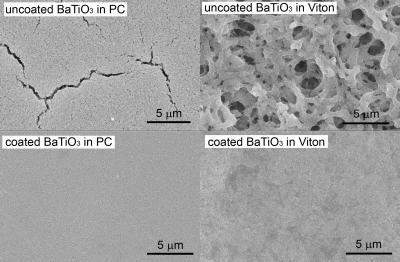Professionally speaking, things in David Damanik's world don't line up – and he can prove it.
In new research, Damanik and colleague Serguei Tcheremchantsev offer a key proof in the study of quasicrystals, crystal-like materials whose atoms don't line up in neat, unbroken rows like the atoms found in crystals.
 Scanning electron micrographs of barium titanate (BaTiO3) nanocomposites with polycarbonate (left, top and bottom) and Viton (right, top and bottom) polymer matrices.
Scanning electron micrographs of barium titanate (BaTiO3) nanocomposites with polycarbonate (left, top and bottom) and Viton (right, top and bottom) polymer matrices.